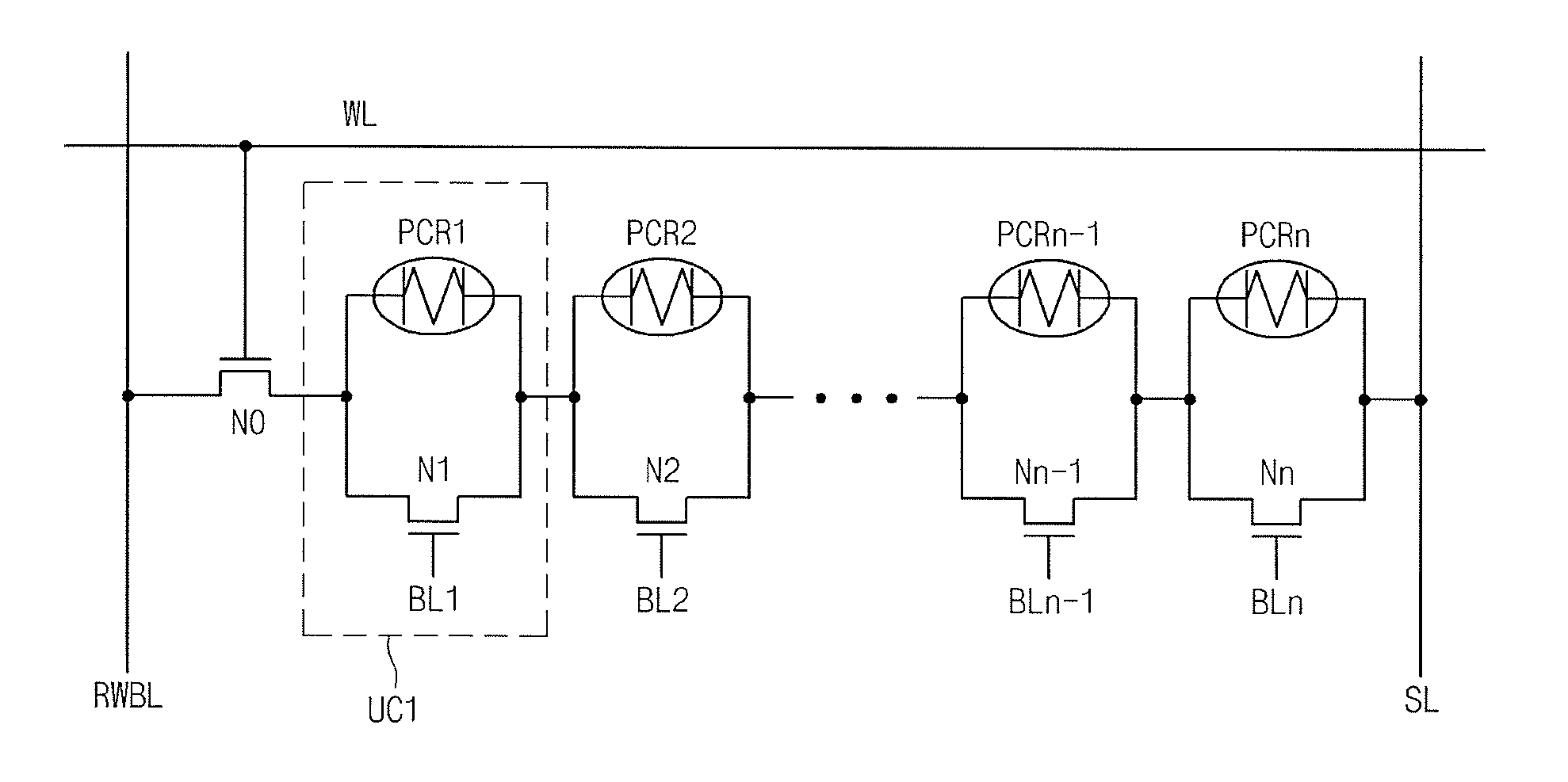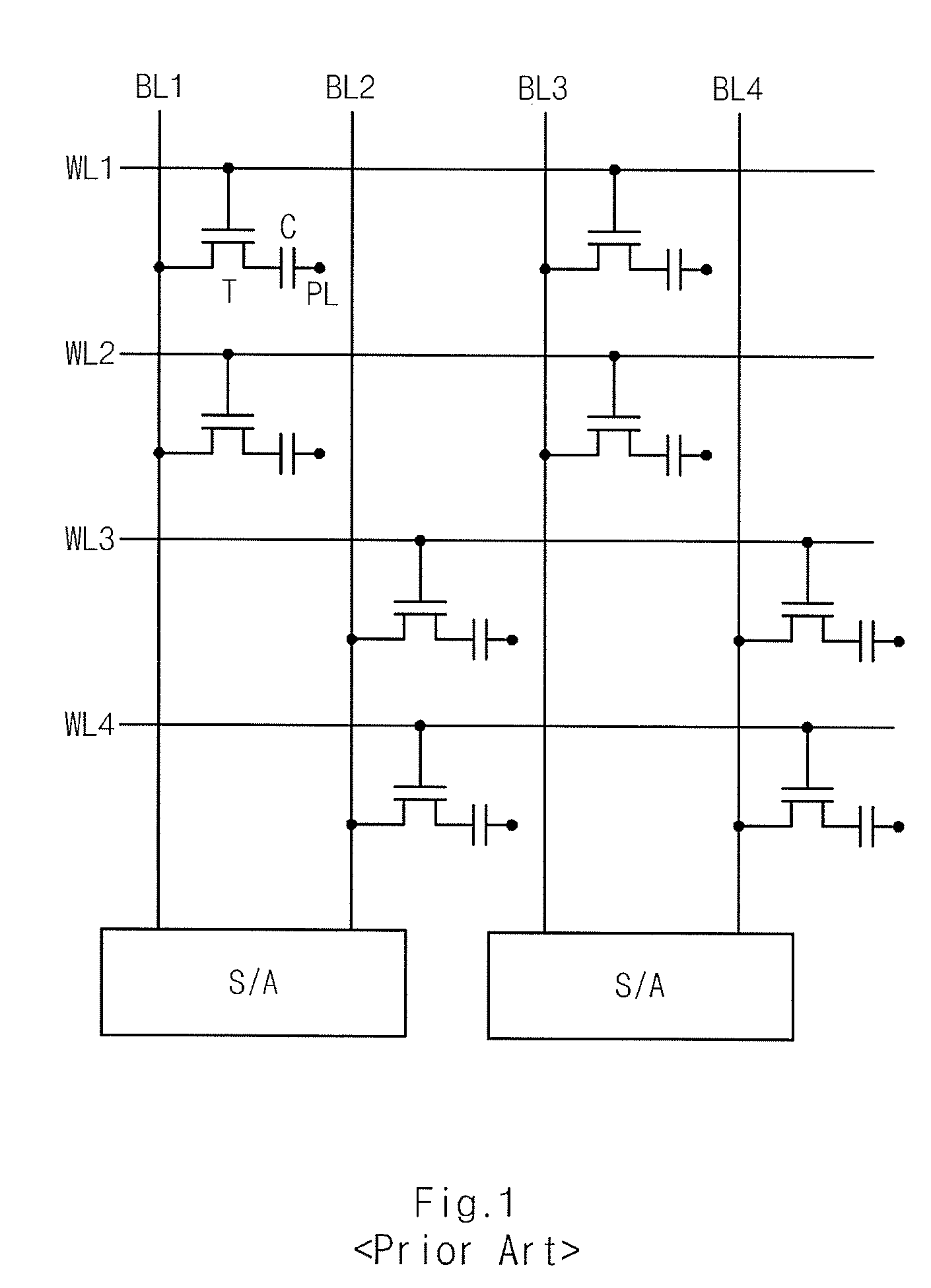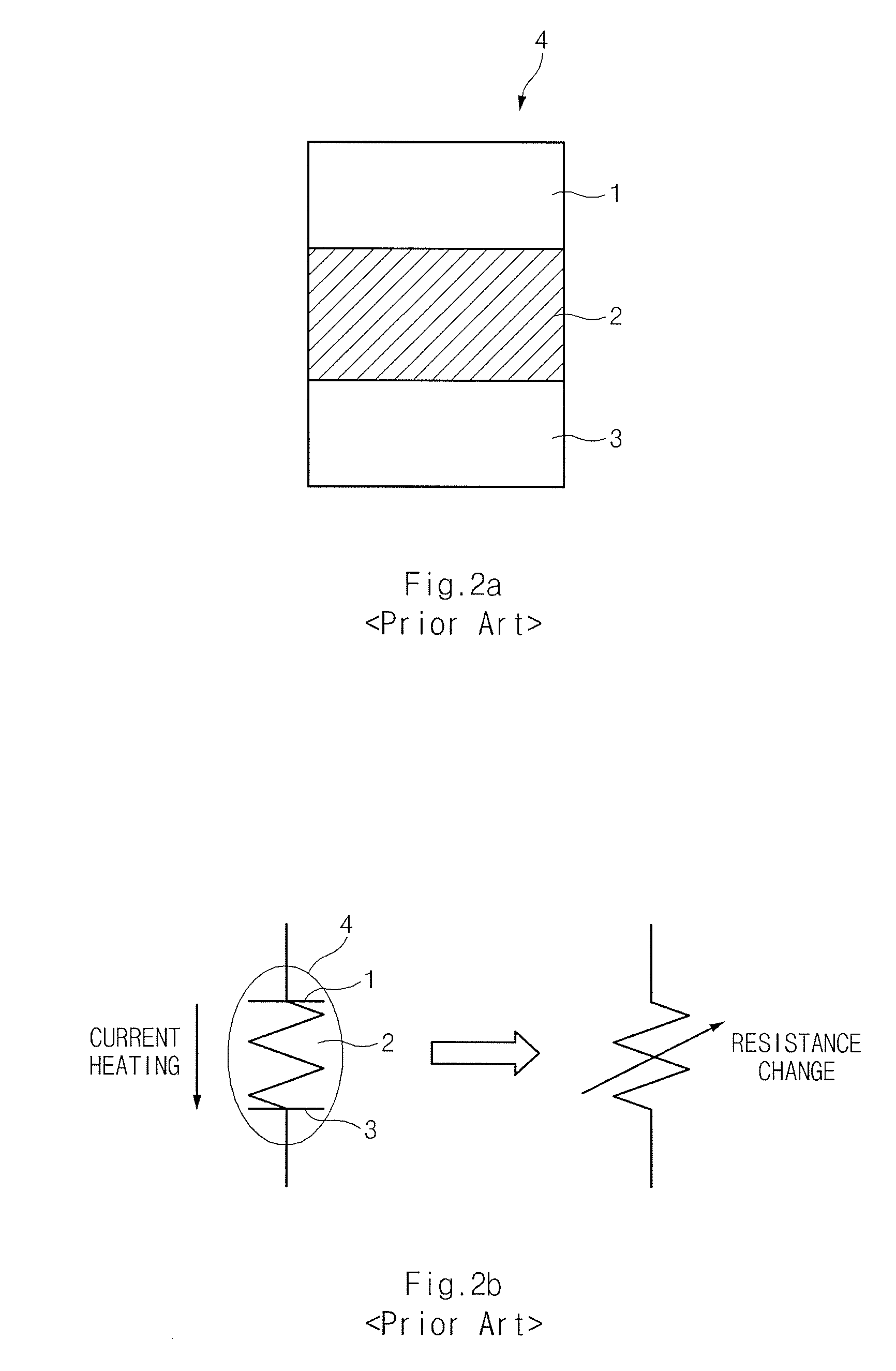Semiconductor memory device for writing data to multiple cells simultaneously and refresh method thereof
a memory device and memory device technology, applied in static storage, digital storage, instruments, etc., can solve the problems of losing even the previously charged power, instant power disconnection, and destroying the data of a ram, so as to improve the data retention of the cell array
- Summary
- Abstract
- Description
- Claims
- Application Information
AI Technical Summary
Benefits of technology
Problems solved by technology
Method used
Image
Examples
Embodiment Construction
[0108]FIG. 9 is a circuit diagram showing a semiconductor memory device according to an embodiment of the present invention.
[0109]The semiconductor memory device of FIG. 9 comprises a selecting switch SW0, a plurality of cells C1˜Cn, and a plurality of switching elements SW1˜SWn.
[0110]The selecting switch SW0 includes a NMOS transistor. The selecting switch SW0 is connected between a read / write bit line RWBL and a unit cell UC, and the gate of the selecting switch is connected to a word line WL.
[0111]In each unit cell UC a cell C1 is connected in parallel to a switching element SW1. The cell C1 has one electrode connected to the source of the switching element SW1 and the other electrode connected to the drain of the switching element SW1. Gates of the switching elements SW1˜SWn are each connected one by one to a predetermined bit line of a plurality of bit lines BL1˜BLn.
[0112]The cells C1˜Cn are connected between the selecting switch SW0 and the source line SL. That is, the source ...
PUM
 Login to View More
Login to View More Abstract
Description
Claims
Application Information
 Login to View More
Login to View More - R&D
- Intellectual Property
- Life Sciences
- Materials
- Tech Scout
- Unparalleled Data Quality
- Higher Quality Content
- 60% Fewer Hallucinations
Browse by: Latest US Patents, China's latest patents, Technical Efficacy Thesaurus, Application Domain, Technology Topic, Popular Technical Reports.
© 2025 PatSnap. All rights reserved.Legal|Privacy policy|Modern Slavery Act Transparency Statement|Sitemap|About US| Contact US: help@patsnap.com



